
LOADING ...
In response to evolving domestic opinion, eMedals Inc has made the conscious decision to remove the presentation of German Third Reich historical artifacts from our online catalogue. For three decades, eMedals Inc has made an effort to preserve history in all its forms. As historians and researchers, we have managed sensitive articles and materials with the greatest of care and respect for their past and present social context. We acknowledge the growing sentiments put forth by the Canadian public and have taken proactive actions to address this opinion.
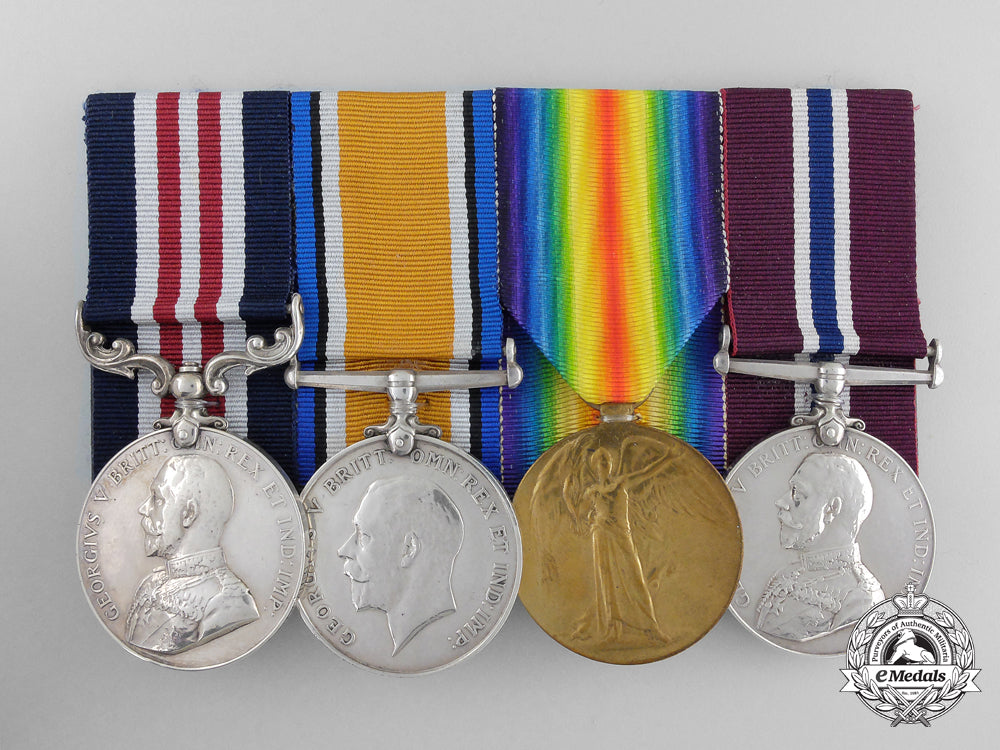

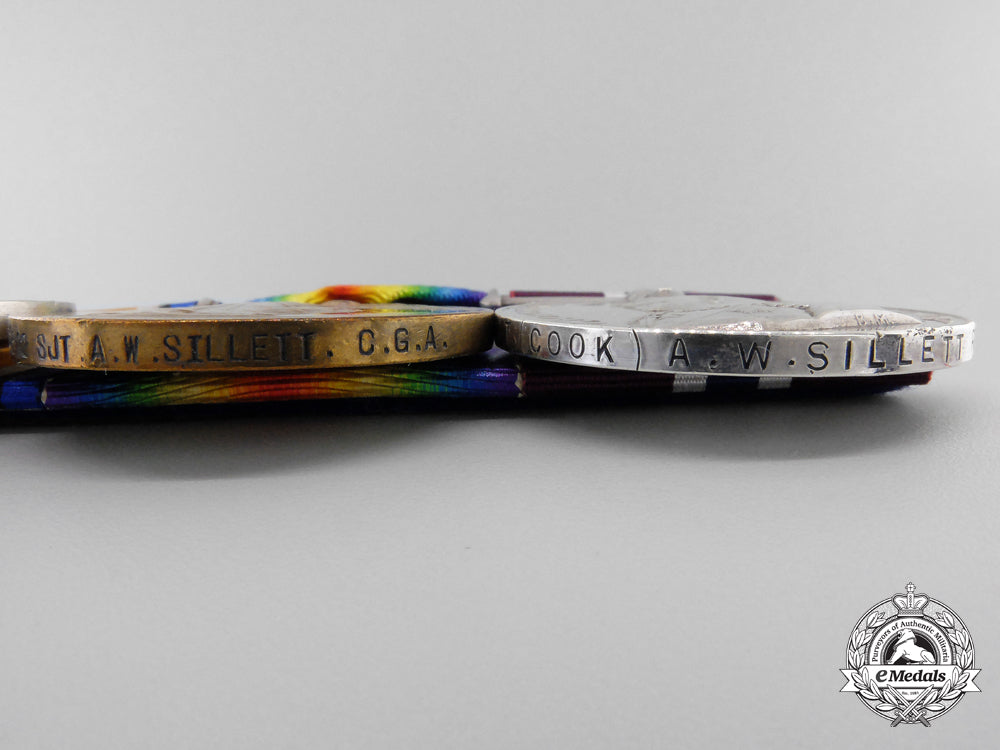
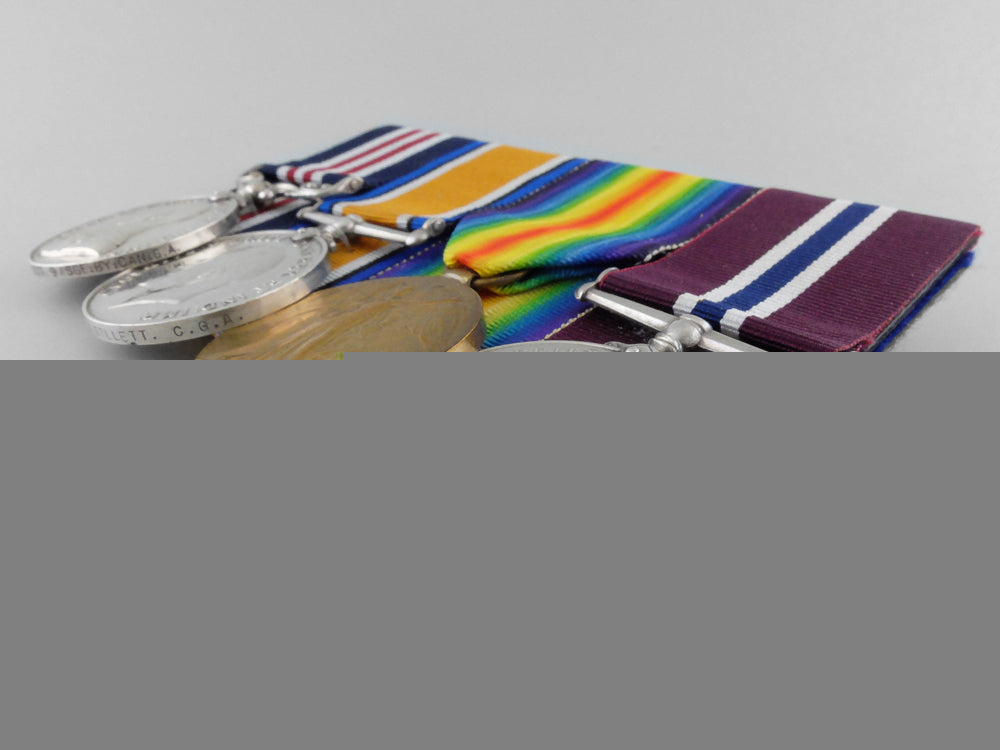

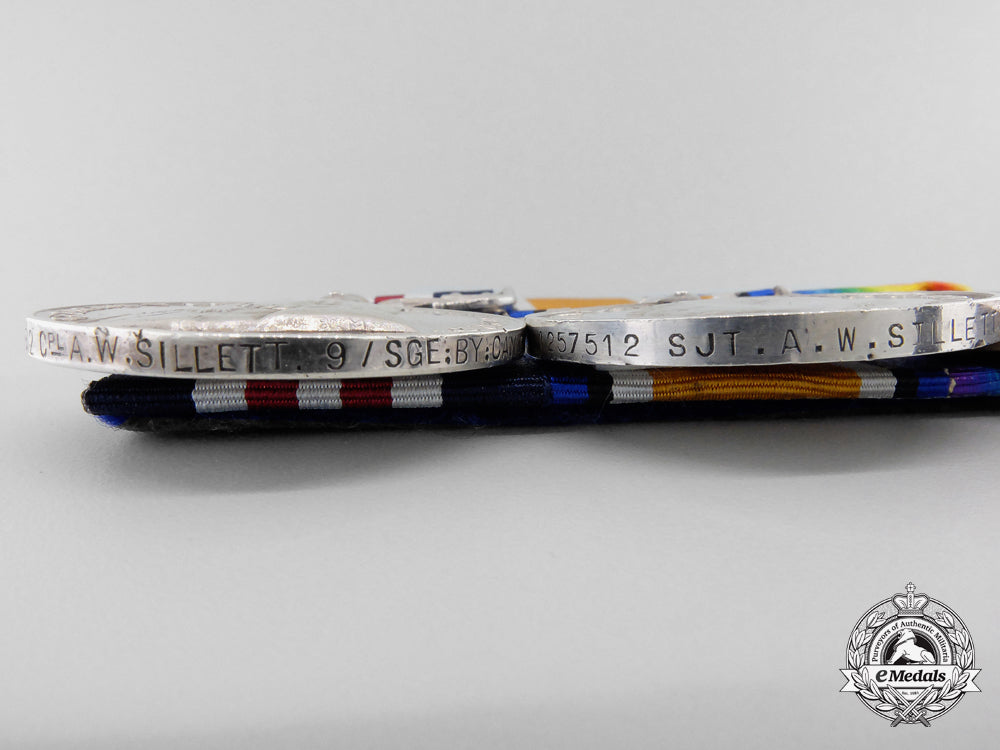
Canada. A Military Medal Group To The No. 9 Canadian Siege Battery Rcga
Canada. A Military Medal Group To The No. 9 Canadian Siege Battery Rcga
SKU: ITEM: C3986
Current Bid:
Your Max Bid:
Bid History:
Time Remaining:
Couldn't load pickup availability
Shipping Details
Shipping Details
eMedals offers rapid domestic and international shipping. Orders received prior to 12:00pm (EST) will be shipped on the same business day.* Orders placed on Canadian Federal holidays will be dispatched the subsequent business day. Courier tracking numbers are provided for all shipments. All items purchased from eMedals can be returned for a full monetary refund or merchandise credit, providing the criteria presented in our Terms & Conditions are met. *Please note that the addition of a COA may impact dispatch time.
Shipping Details
eMedals offers rapid domestic and international shipping. Orders received prior to 12:00pm (EST) will be shipped on the same business day.* Orders placed on Canadian Federal holidays will be dispatched the subsequent business day. Courier tracking numbers are provided for all shipments. All items purchased from eMedals can be returned for a full monetary refund or merchandise credit, providing the criteria presented in our Terms & Conditions are met. *Please note that the addition of a COA may impact dispatch time.
Description
Description
Military Medal, George V, uncrowned head (1257512 Cpl A.W. SILLETT. 9/SGE;BY;CAN:G.A.); British War Medal (1257512 SJT. A.W. SILLETT. C.G.A.); Victory Medal (1257512 SJT. A.W. SILLETT. C.G.A.); and Permanent Forces of the Empire Beyond the Seas Long Service and Good Conduct Medal (SGT. (COOK) A.W. SILLETT R.C.A.). Naming is impressed. Court-mounted, edge nicks, light contact, near extremely fine. Accompanied by copies of his Pre-War/CEF/Post War Militia records, including Index Cards, Attestation Papers, Service Records, Medical Records, Discharge Certificates, along with the Supplement to the London Gazette 30940, page 11840 (dated October 7, 1918, naming him as a recipient of the Military Medal), a printed photograph of The 1907 Draft of Men of the Royal Garrison Artillery (taken in Liverpool, England before sailing for Halifax on February 21, 1907) and assorted research papers.
Footnote: Alfred William Sillett was born on April 17, 1886 in Limerick, County Limerick, Ireland, the son of Alfred and Helena Sillett of Queenstown, Ireland. He enlisted with the Royal Garrison Artillery on October 28, 1904, under the alias of Alfred Armstrong and was to serve for two years and four months before being discharged on February 21, 1907, with a view to enlisting with the Canadian Garrison Artillery, regimental number 5296. Sillett (AKA Armstrong) was part of the draft of men of the Royal Garrison Artillery, which sailed from Liverpool, England to Halifax, Nova Scotia on February 21, 1907. He signed his Attestation Paper as Alfred William Armstrong (Sillett's alias) with the Royal Canadian Garrison Artillery, at Plymouth, England, on February 22, 1907, at the age of 20, naming his next-of-kin as his father, Alfred "Armstrong", stating that he had two years and 117 days previous service with the Royal Garrison Artillery and had been discharged with a view to enlistment into the Royal Canadian Garrison Artillery, that he was not married and that his trade was that of Labourer, joining No. 2 Company, RCGA. He was promoted to Corporal in May 1909 and re-engaged for additional service on February 18, 1910. Sillett married Mary Payne in Halifax on October 25, 1910, still claiming to be Armstrong, and was to later have one child, Alfred Samuel Edgar Sillett. He successfully completed courses in Gun Laying (1910) and 1st Class Gunner (1913-14). However, he was declared Absent Without Leave on January 11, 1911 at Halifax and by February 2nd, had been struck off by a Court of Enquiry, forfeiting his rank and previous service. He did eventually return from desertion on August 22, 1911 but his former service was not restored to him until September 1914. He immediately re-engaged at Sandwich Battery Headquarters at Halifax, with his rank being restored to him in May 1916. Sillett's alias of Armstrong was finally rectified in his records in January 1915, in a sworn statement signed by him and notarized by a Justice of the Peace: "I Alfred Sillett do solemnly and sincerely declare that I was enlisted on the 22nd February 1907, under the name Alfred Armstrong, which name I now declare to be incorrect. The name of Alfred Sillett, contained in the accompanying certificate of marriage, I now declare to be my true name, and I make this solemn declaration conscientiously, believing the same to be true, by the virtue of the provisions of an Act made and passed in the sixth year of the reign of King William the Fourth. Chap. 62, entitled "The Statuatory Declarations Act, 1835."" Sillett declared himself available for war service in the Great War, signing his CEF Attestation Paper with No. 8 Overseas Siege Battery, Royal Canadian Garrison Artillery, regimental number 1257512, in Halifax, on July 18, 1916, naming his next-of-kin as his wife, Mary Sillett, stating that he had two years and six months previous service with the Royal Garrison Artillery and nine years with the Royal Canadian Garrison Artillery, that he was married and that his trade was that of Soldier. In the summer of 1916, authority was granted for the RCGA at Halifax and Esquimalt, British Columbia, to form a battery for overseas participation. Sillett was appointed Acting Bombardier and left for England on September 26, 1916, when he embarked Halifax for Liverpool, England, arriving on October 6th. Three months later, the No. 8 Siege Battery was re-designated No. 9 Canadian Siege Battery in January 1917. Six months after arriving in England, he proceeded to the French theatre on March 21, 1917, landing in France the following day and was confirmed in the rank of Bombardier. Sillett was in France for just two months, after which he was transferred to England and posted to the Canadian Artillery Regimental Depot at Shorncliffe in May for the next five months, thus missing the action with No. 9 Siege Battery at the Battle of Hill 70 in August. While at the Depot, he was appointed to Acting Corporal on July 3rd and promoted to Corporal on October 18th, after which he returned to Boulogne, France, where he reverted to the rank of Bombardier upon his arrival as a reinforcement, rejoining his unit on October 31st. He officially re-engaged for service on November 17th and was to remain with No. 9 Canadian Siege Battery RCGA until the end of the war. He saw a promotion to Sergeant on June 11, 1918. In the rank of Corporal, A.W. Sillett, Canadian Garrison Artillery was awarded the Military Medal, as mentioned in the London Gazette 30940, page 11840, on October 7, 1918. He returned to England on April 2, 1919 and was placed at the Canadian Concentration Camp, Kinmel Park, before embarking from Southampton, England on May 3rd aboard the H.M.T. Mauretania, arriving in Halifax on May 9th. Sillett was discharged upon demobilization on June 20, 1919 at Military District No. 6 in Halifax, credited with having served in Canada, Great Britain, France and Belgium, entitled to wear the War Service Badge, Class "A" and earning him his WWI Pair. Intending to continue his career in the RCGA, three days previous, he had signed his Permanent Force of Canada Attestation Paper as a Corporal on June 17, 1919 in Halifax, Nova Scotia, regimental number 4092, stating that he had two years and 117 days previous service with the RGA and twelve years and three months with the RCGA, that he was married and that his trade was that of Soldier. He was officially re-engaged on June 20th. He successfully completed four additional courses in Gun Laying (1922, 1923, 1924, 1925). Sillett was appointed Sergeant (Master Cook) on November 1, 1923, with superior officers noting that he was "A very good cook and an excellent caterer for the men. A very good allround Artilleryman and a good clerk." and "A very clean hard working N.C.O., very willing and had good initiative." Sillett was awarded his Permanent Forces of the Empire Beyond the Seas Long Service and Good Conduct Medal in 1926 by General Order No. 63. He was discharged to pension on December 24, 1933 at Halifax, his character noted as "Exemplary". He died on June 12, 1963 in Halifax, at the age of 77.
Description
Military Medal, George V, uncrowned head (1257512 Cpl A.W. SILLETT. 9/SGE;BY;CAN:G.A.); British War Medal (1257512 SJT. A.W. SILLETT. C.G.A.); Victory Medal (1257512 SJT. A.W. SILLETT. C.G.A.); and Permanent Forces of the Empire Beyond the Seas Long Service and Good Conduct Medal (SGT. (COOK) A.W. SILLETT R.C.A.). Naming is impressed. Court-mounted, edge nicks, light contact, near extremely fine. Accompanied by copies of his Pre-War/CEF/Post War Militia records, including Index Cards, Attestation Papers, Service Records, Medical Records, Discharge Certificates, along with the Supplement to the London Gazette 30940, page 11840 (dated October 7, 1918, naming him as a recipient of the Military Medal), a printed photograph of The 1907 Draft of Men of the Royal Garrison Artillery (taken in Liverpool, England before sailing for Halifax on February 21, 1907) and assorted research papers.
Footnote: Alfred William Sillett was born on April 17, 1886 in Limerick, County Limerick, Ireland, the son of Alfred and Helena Sillett of Queenstown, Ireland. He enlisted with the Royal Garrison Artillery on October 28, 1904, under the alias of Alfred Armstrong and was to serve for two years and four months before being discharged on February 21, 1907, with a view to enlisting with the Canadian Garrison Artillery, regimental number 5296. Sillett (AKA Armstrong) was part of the draft of men of the Royal Garrison Artillery, which sailed from Liverpool, England to Halifax, Nova Scotia on February 21, 1907. He signed his Attestation Paper as Alfred William Armstrong (Sillett's alias) with the Royal Canadian Garrison Artillery, at Plymouth, England, on February 22, 1907, at the age of 20, naming his next-of-kin as his father, Alfred "Armstrong", stating that he had two years and 117 days previous service with the Royal Garrison Artillery and had been discharged with a view to enlistment into the Royal Canadian Garrison Artillery, that he was not married and that his trade was that of Labourer, joining No. 2 Company, RCGA. He was promoted to Corporal in May 1909 and re-engaged for additional service on February 18, 1910. Sillett married Mary Payne in Halifax on October 25, 1910, still claiming to be Armstrong, and was to later have one child, Alfred Samuel Edgar Sillett. He successfully completed courses in Gun Laying (1910) and 1st Class Gunner (1913-14). However, he was declared Absent Without Leave on January 11, 1911 at Halifax and by February 2nd, had been struck off by a Court of Enquiry, forfeiting his rank and previous service. He did eventually return from desertion on August 22, 1911 but his former service was not restored to him until September 1914. He immediately re-engaged at Sandwich Battery Headquarters at Halifax, with his rank being restored to him in May 1916. Sillett's alias of Armstrong was finally rectified in his records in January 1915, in a sworn statement signed by him and notarized by a Justice of the Peace: "I Alfred Sillett do solemnly and sincerely declare that I was enlisted on the 22nd February 1907, under the name Alfred Armstrong, which name I now declare to be incorrect. The name of Alfred Sillett, contained in the accompanying certificate of marriage, I now declare to be my true name, and I make this solemn declaration conscientiously, believing the same to be true, by the virtue of the provisions of an Act made and passed in the sixth year of the reign of King William the Fourth. Chap. 62, entitled "The Statuatory Declarations Act, 1835."" Sillett declared himself available for war service in the Great War, signing his CEF Attestation Paper with No. 8 Overseas Siege Battery, Royal Canadian Garrison Artillery, regimental number 1257512, in Halifax, on July 18, 1916, naming his next-of-kin as his wife, Mary Sillett, stating that he had two years and six months previous service with the Royal Garrison Artillery and nine years with the Royal Canadian Garrison Artillery, that he was married and that his trade was that of Soldier. In the summer of 1916, authority was granted for the RCGA at Halifax and Esquimalt, British Columbia, to form a battery for overseas participation. Sillett was appointed Acting Bombardier and left for England on September 26, 1916, when he embarked Halifax for Liverpool, England, arriving on October 6th. Three months later, the No. 8 Siege Battery was re-designated No. 9 Canadian Siege Battery in January 1917. Six months after arriving in England, he proceeded to the French theatre on March 21, 1917, landing in France the following day and was confirmed in the rank of Bombardier. Sillett was in France for just two months, after which he was transferred to England and posted to the Canadian Artillery Regimental Depot at Shorncliffe in May for the next five months, thus missing the action with No. 9 Siege Battery at the Battle of Hill 70 in August. While at the Depot, he was appointed to Acting Corporal on July 3rd and promoted to Corporal on October 18th, after which he returned to Boulogne, France, where he reverted to the rank of Bombardier upon his arrival as a reinforcement, rejoining his unit on October 31st. He officially re-engaged for service on November 17th and was to remain with No. 9 Canadian Siege Battery RCGA until the end of the war. He saw a promotion to Sergeant on June 11, 1918. In the rank of Corporal, A.W. Sillett, Canadian Garrison Artillery was awarded the Military Medal, as mentioned in the London Gazette 30940, page 11840, on October 7, 1918. He returned to England on April 2, 1919 and was placed at the Canadian Concentration Camp, Kinmel Park, before embarking from Southampton, England on May 3rd aboard the H.M.T. Mauretania, arriving in Halifax on May 9th. Sillett was discharged upon demobilization on June 20, 1919 at Military District No. 6 in Halifax, credited with having served in Canada, Great Britain, France and Belgium, entitled to wear the War Service Badge, Class "A" and earning him his WWI Pair. Intending to continue his career in the RCGA, three days previous, he had signed his Permanent Force of Canada Attestation Paper as a Corporal on June 17, 1919 in Halifax, Nova Scotia, regimental number 4092, stating that he had two years and 117 days previous service with the RGA and twelve years and three months with the RCGA, that he was married and that his trade was that of Soldier. He was officially re-engaged on June 20th. He successfully completed four additional courses in Gun Laying (1922, 1923, 1924, 1925). Sillett was appointed Sergeant (Master Cook) on November 1, 1923, with superior officers noting that he was "A very good cook and an excellent caterer for the men. A very good allround Artilleryman and a good clerk." and "A very clean hard working N.C.O., very willing and had good initiative." Sillett was awarded his Permanent Forces of the Empire Beyond the Seas Long Service and Good Conduct Medal in 1926 by General Order No. 63. He was discharged to pension on December 24, 1933 at Halifax, his character noted as "Exemplary". He died on June 12, 1963 in Halifax, at the age of 77.
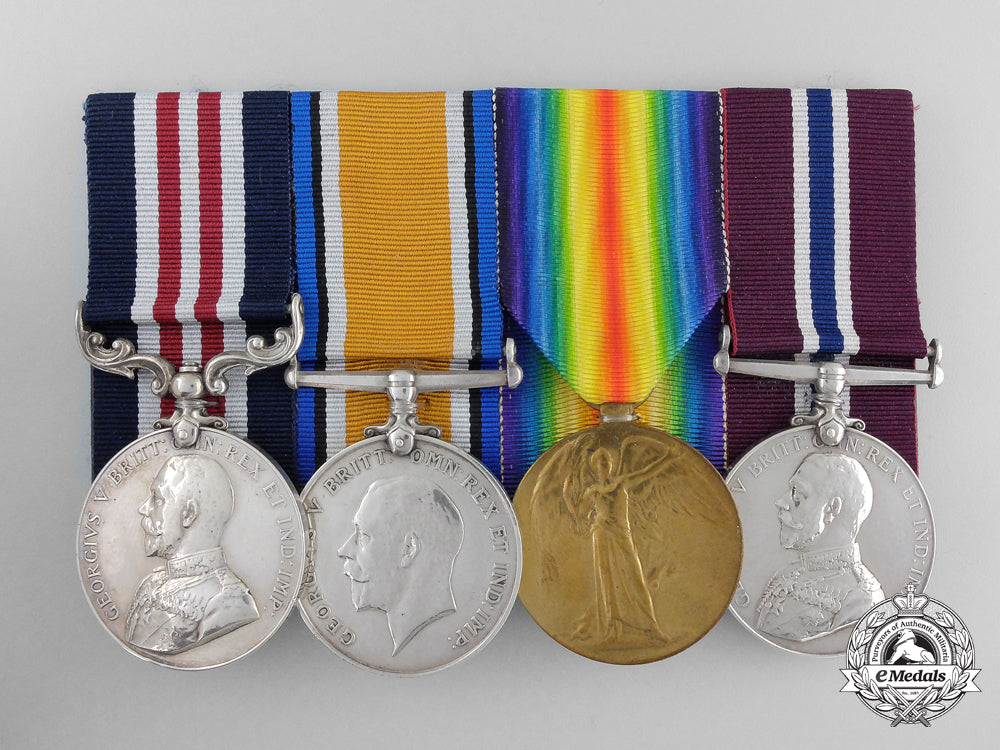

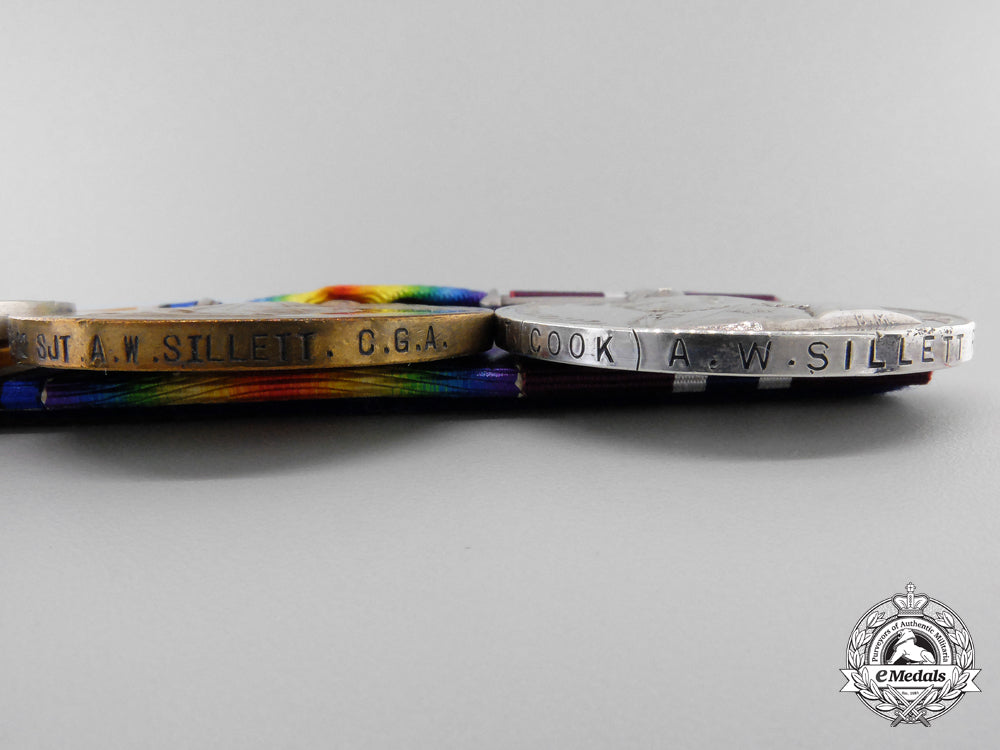
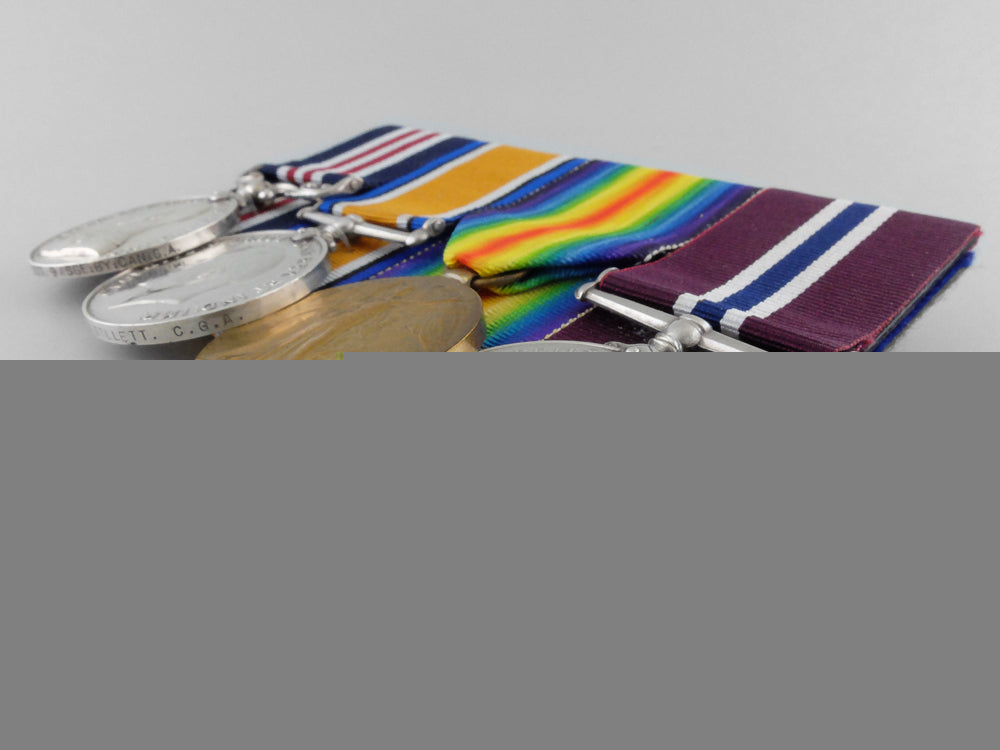

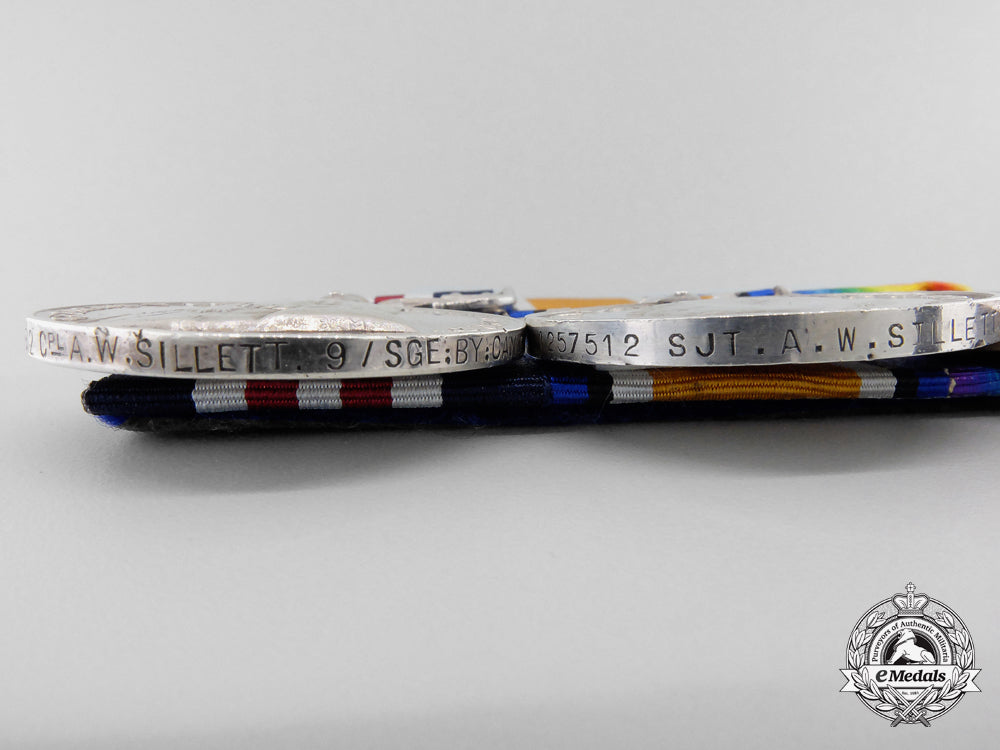
You May Also Like
Germany, HJ. A 1938 National Trade Competition Victor’s Badge, Gold Grade in Case, By Gustav Brehmer
G60096
Italy, Republic. An Order of Merit of the Italian Republic, Grand Cross Set by Johnson, 1970
EU23677
Spain, Franco Period. An Order of Civil Merit, Grand Cross Set
EU23731
Russia, Imperial. An Order of St. Anne, II Class in Gold
EU23720
Austria, Imperial. An Order of the Iron Crown, III Class in Gold, by Rothe, c.1900
EU23723
-
Germany, HJ. A 1938 National Trade Competition Victor’s Badge, Gold Grade in Case, By Gustav Brehmer
G60096
Add to CartRegular price $3,950 USDRegular price $0 USD Sale price $3,950 USDUnit price / per -
Italy, Republic. An Order of Merit of the Italian Republic, Grand Cross Set by Johnson, 1970
EU23677
Add to CartRegular price $950 USDRegular price $0 USD Sale price $950 USDUnit price / per -
Spain, Franco Period. An Order of Civil Merit, Grand Cross Set
EU23731
Add to CartRegular price $600 USDRegular price $0 USD Sale price $600 USDUnit price / per -
Russia, Imperial. An Order of St. Anne, II Class in Gold
EU23720
Add to CartRegular price $2,950 USDRegular price $0 USD Sale price $2,950 USDUnit price / per -
Austria, Imperial. An Order of the Iron Crown, III Class in Gold, by Rothe, c.1900
EU23723
Add to CartRegular price $3,950 USDRegular price $0 USD Sale price $3,950 USDUnit price / per
Do you have a similar item you are interested in selling?
Please complete the form and our client care representatives will contact you.
Sell Item
















